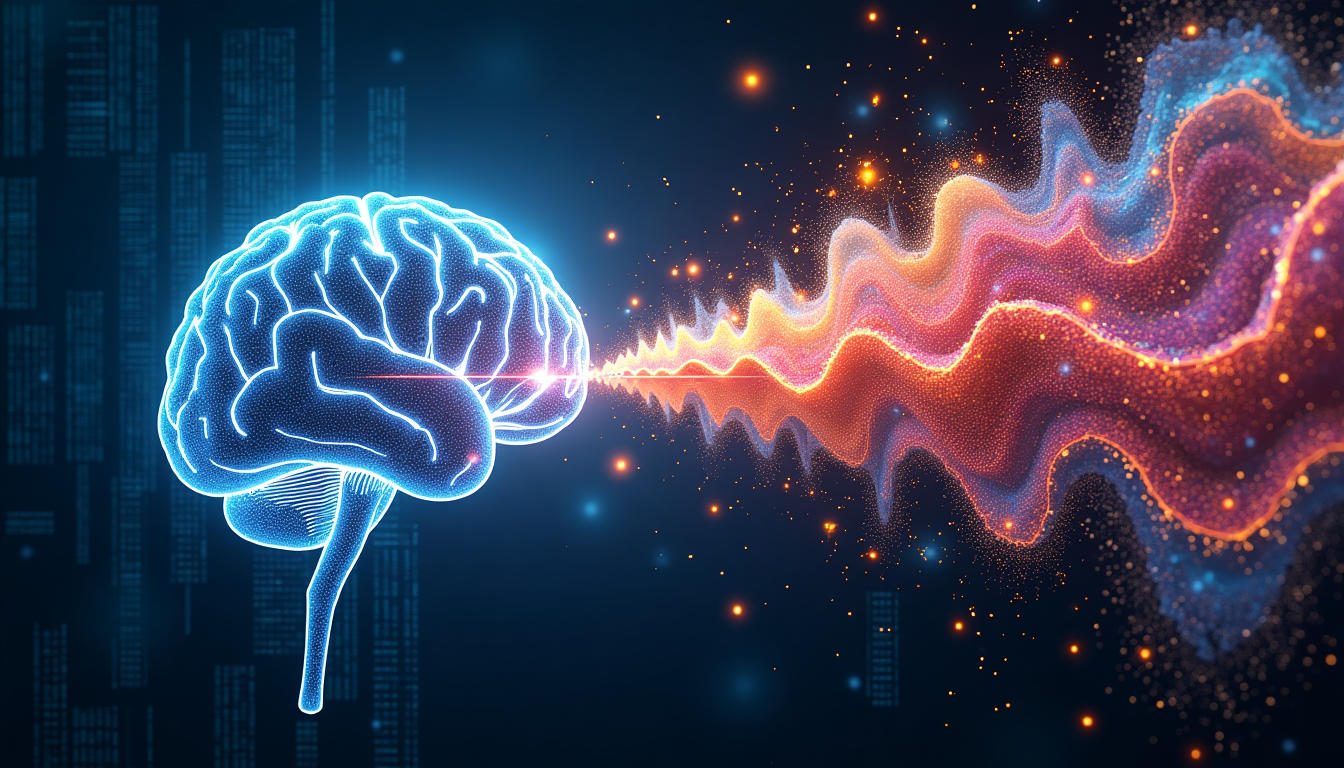
Last Update: January 17, 2025
BY eric
eric
Keywords
Comparing AI Text-to-Image Tools: DALL-E, FlexClip, Ideogram, Crok, Microsoft Designer, and Deep Dream Generator
Introduction
Artificial Intelligence has revolutionized the way we create and interact with digital art. One of the most exciting advancements is the development of text-to-image tools, which allow users to generate stunning visuals by simply describing them in words. These tools have become increasingly popular among artists, designers, and content creators for their ability to produce professional-grade images in mere seconds.
The current market is highly competitive, with numerous AI tools offering text-to-image services tailored to various user needs, from creative art generation to professional design. This abundance of options reflects rapid advancements in AI technology and growing demand for accessible, high-quality visual content creation.
For a comprehensive compilation of text-to-image generation tools, please refer to our curated resource directory here: Image Generation AI Tools.
- DALL·E 3
- MidJourney
- Grok
- FlexClip
- DreamStudio
- Deep Dream Generator
- Dream by WOMBO
- Adobe Firefly
- Prodia
- Microsoft Designer
- Shutterstock AI
- Ideogram
However, most AI tools have moved away from free tiers due to the high operational costs of running resource-intensive models, the need to manage growing demand, and the necessity of generating revenue to fund ongoing development and innovation. Free tiers often attract misuse, strain resources, and become unsustainable as user bases expand. Economic pressures, such as rising infrastructure costs, and the competitive market further push providers to focus on paid models, enabling them to offer higher-quality services, better support, and continuous improvements to paying customers.
With the services we subscribe to, along with a few that still offer free tier access, we can compare and contrast the capabilities and features of various text-to-image tools. With that, in this article, we’ll explore and compare five text-to-image AI tools: DALL-E, Ideogram, Grok, FlexClip, Microsoft Designer, and Deep Dream Generator.
DALL-E
Developed by OpenAI, DALL-E is one of the most advanced and well-known text-to-image tools. It is capable of generating highly detailed and creative images based on complex prompts.
- Key Features: Unique ability to generate surreal and imaginative images
- Best For: Artists and content creators looking for versatility and creativity in their visual content.
- Limitations: May require fine-tuning of prompts for precise results, and access might depend on subscription plans.
Ideogram
Ideogram is a tool designed to simplify the creative process while maintaining quality and precision in image generation. It is particularly known for its focus on producing visual assets for branding and marketing.
- Key Features: Simple interface, pre-designed templates, and support for quick customization.
- Best For: Businesses and marketers needing fast, visually appealing results.
- Limitations: May lack advanced customization options compared to other tools.
Grok
Grok is an innovative addition to the text-to-image landscape, leveraging AI to provide highly personalized and context-aware visual content. Designed with advanced algorithms, it aims to cater to users seeking intelligent and adaptive image generation.
- Key Features: Context-aware image generation, seamless integration with other X products, and a focus on user customization.
- Best For: Professionals and creatives who want a tailored image generation experience with smart adaptability.
- Limitations: May lack the ability to generate high-quality images with intricate details.
FlexClip
FlexClip stands out as a multi-purpose tool that combines video editing capabilities with text-to-image features. It’s designed with user-friendliness in mind, making it a popular choice for beginners.
- Key Features: Combines text-to-image with video editing, extensive library of templates, and drag-and-drop functionality.
- Best For: Content creators and small businesses creating multimedia projects.
- Limitations: Geared more toward video creation, and image generation might not be as detailed as competitors.
Microsoft Designer
Microsoft Designer integrates AI-driven creativity into a platform designed for professional-grade graphic design. It’s part of Microsoft’s broader push to make design accessible to all.
- Key Features: Seamless integration with Microsoft Office, professional design templates, and AI suggestions for layouts.
- Best For: Corporate users and professionals working within the Microsoft ecosystem.
- Limitations: Features may feel restrictive for users seeking highly customized image outputs.
Deep Dream Generator
Inspired by Google’s DeepDream project, the Deep Dream Generator creates highly stylized, dream-like visuals that are perfect for artistic exploration.
- Key Features: Focus on creating artistic and surreal images, ability to apply unique styles, and community-driven content sharing.
- Best For: Artists and enthusiasts exploring abstract and creative designs.
- Limitations: Limited practical use for business and marketing purposes.
Image Generation Results
Below are some examples of image generation results from each tool, and you can compare the images generated by each tool.
Image Generation #1 |
Prompt
An architectural photograph of a futuristic building. This house features intricate panels, artificial lighting and stylish curved design. Located on the edge of a cliff overlooking the ocean, the house was photographed using a wide-angle lens during golden hour. The background is two planets visible in the beautiful sky. The composition cleverly emphasizes the harmony between the house and the surroundings
Results
DALL·E (by OpenAI with ChatGPT Plus subscription)
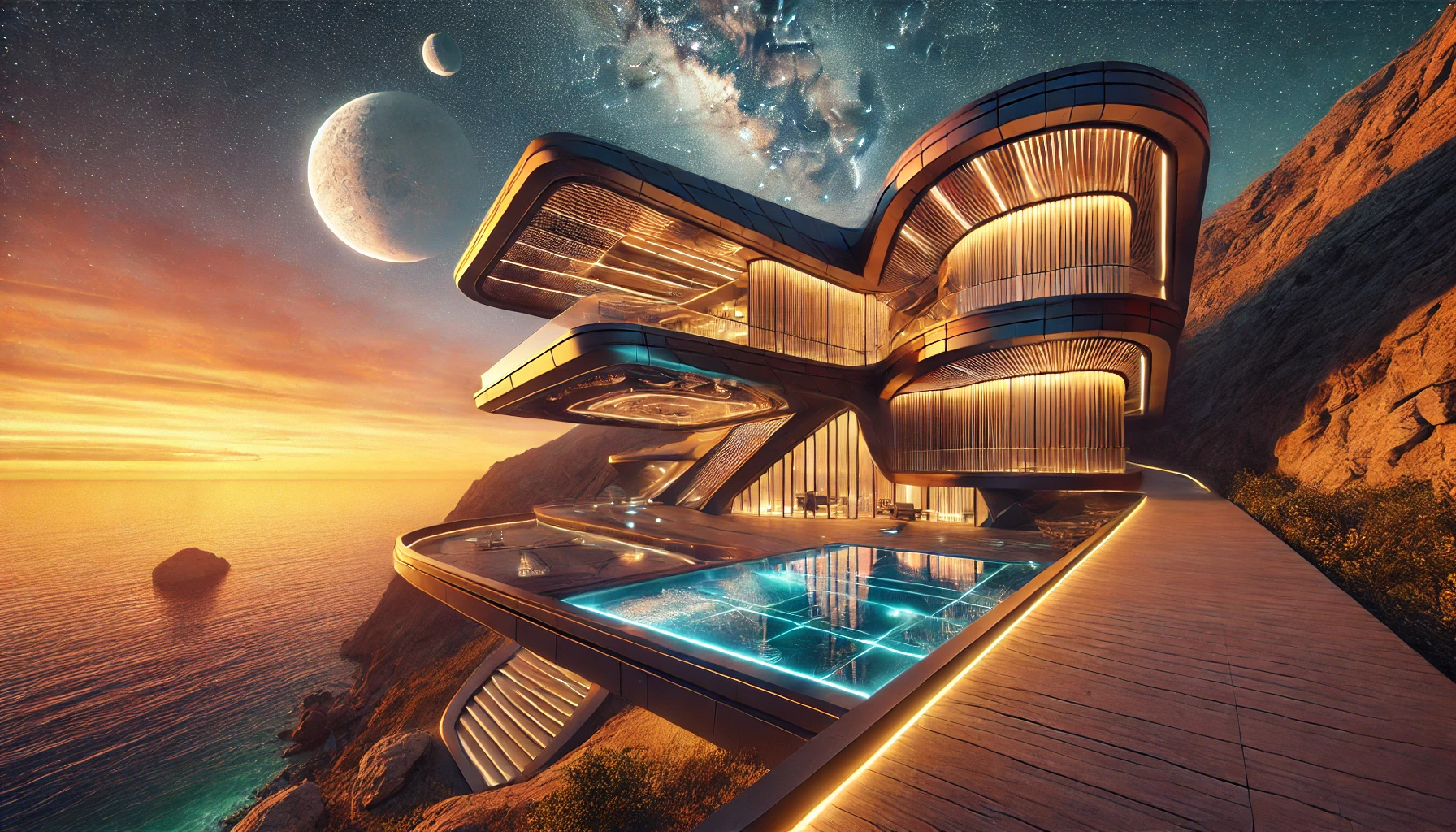
This image presents an intriguing vision of futuristic concept art. While it is visually engaging, it feels somewhat unnatural, with the proportions of the building appearing unbalanced. The overall composition lacks the subtle realism needed to disguise its origins, leaving viewers with little doubt that it is an AI-generated creation.
Grok
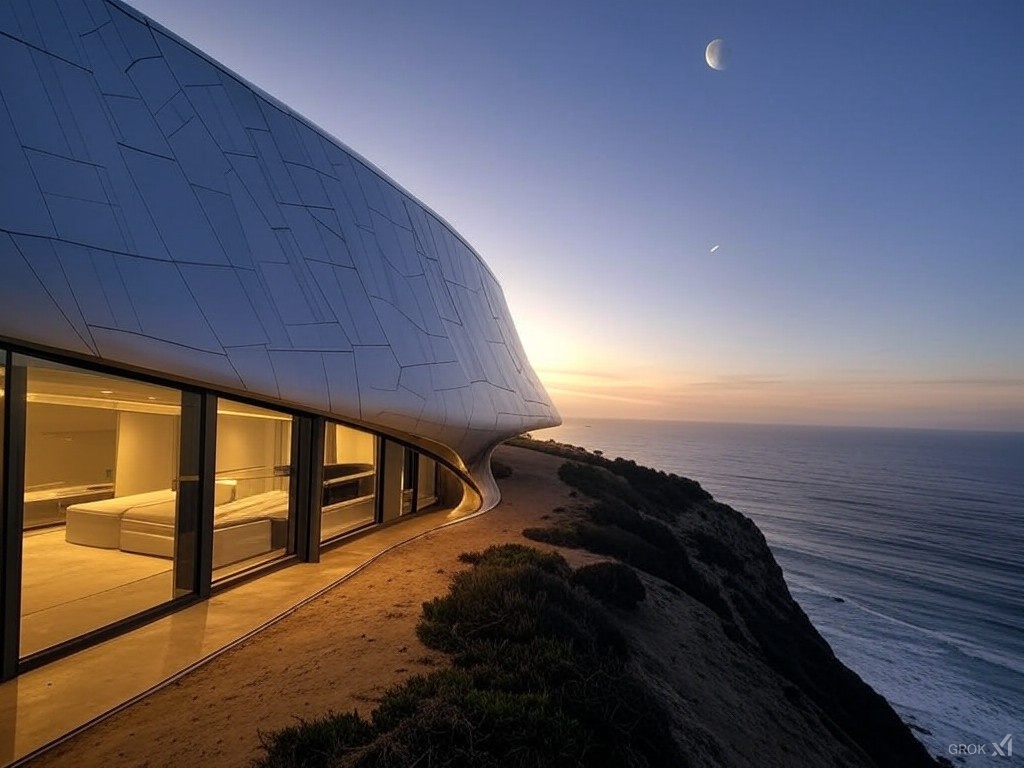
Grok can generate four images per prompt, and the one above stands out as the best among them. The image features a building with an elegant architectural design that is visually appealing. While the structure appears modern, it lacks the distinctive elements to classify it as futuristic. Additionally, the celestial object in the sky is ambiguous—it could be interpreted as either the moon or a planet. The presence of a second planet is subtle and not prominently visible, which diminishes its overall impact.
FlexClip
Further refinement is allowed on FlexClip when creating an image. Overall there are five main styles: Photo, Digital, Anime, Painting, and Vintage. And from each main style, there are many sub-styles to choose. For example, under the main style of Photo, you can choose between Cinematic, Studio Sot, Moody Filem, Black and White, Dark and Cyberpunk. Also there are three models to use: Fast,Pro, and Ultra.
For this prompt, we use the following settings:
- Model: Pro
- Style: Cinematic
- Resolution: 768 * 1344 px
- Ratio: 9:16
- Image Count: 1
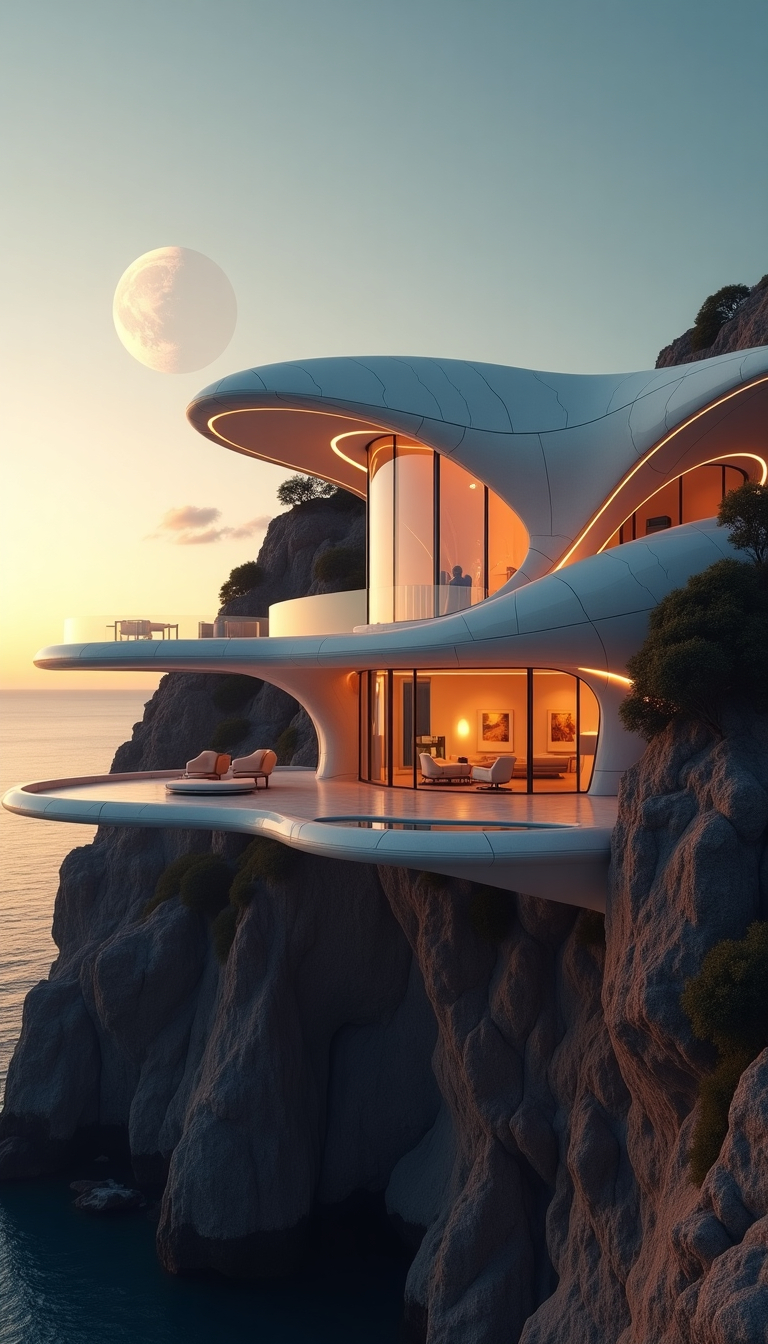
This is a stunning piece of futuristic architectural concept art. The image shows a luxurious modern home built into a cliff overlooking an ocean. The structure has a dramatic, sculptural design with curved forms and multiple levels that seem to cascade down the rocky cliff face. The building features warm, golden lighting throughout its glass walls and vertical slatted surfaces. The details of the structure are intricate and elegant, with a sense of grandeur and sophistication. The image is a perfect example of the power of AI in creating stunning and visually stunning images. The only issue is that there is one planet missing or too vague to be visible in the background.
Ideogram
On Ideogram, there are two models available: Ideogram 1.0 and Ideogram 2.0. Also there are six styles to choose: Auto, General, Realistic, Design, 3D, Anime.

Ideogram demonstrates impressive prompt interpretation, delivering visually compelling imagery. Notably, all generated images include two planets, adhering consistently to the theme. However, while the building design may appear futuristic at first glance, its architectural quality seems lacking in sophistication. It raises the question: is this truly the vision we have for residential architecture in the future?
Microsoft Designer
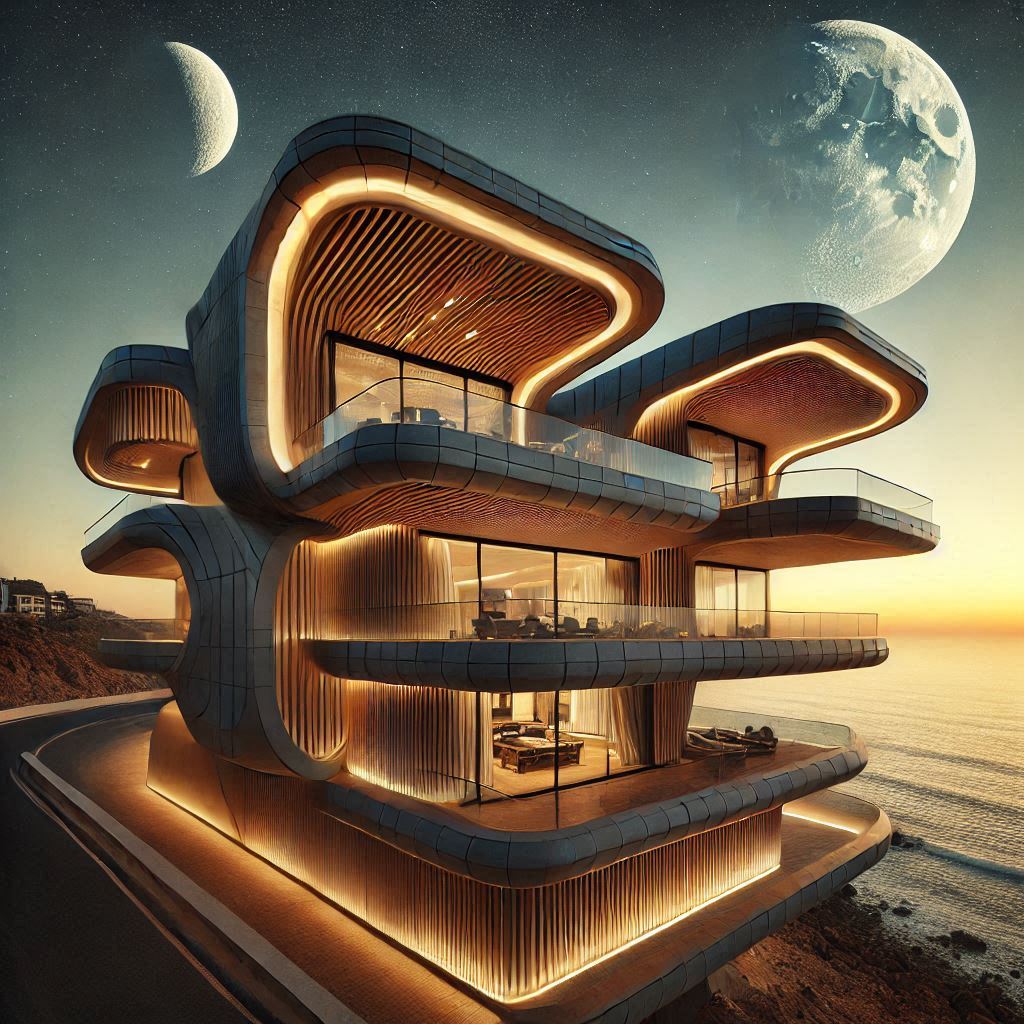
This image exudes a similar aesthetic to those produced by DALL·E. Given the close collaboration between Microsoft and OpenAI, it’s reasonable to infer that Microsoft Designer employs a model with comparable technical underpinnings to DALL·E. The composition is visually appealing, with architectural elements showcasing a distinct design language. However, the structure lacks a truly avant-garde or cutting-edge quality, leaning more toward contemporary motifs rather than a futuristic paradigm.
Deep Dream Generator
There are six AI models available: Davinci2, Photonic, Artistic 2, ArtFusion (Pro), Flux (Pro), and AIVision (Pro).
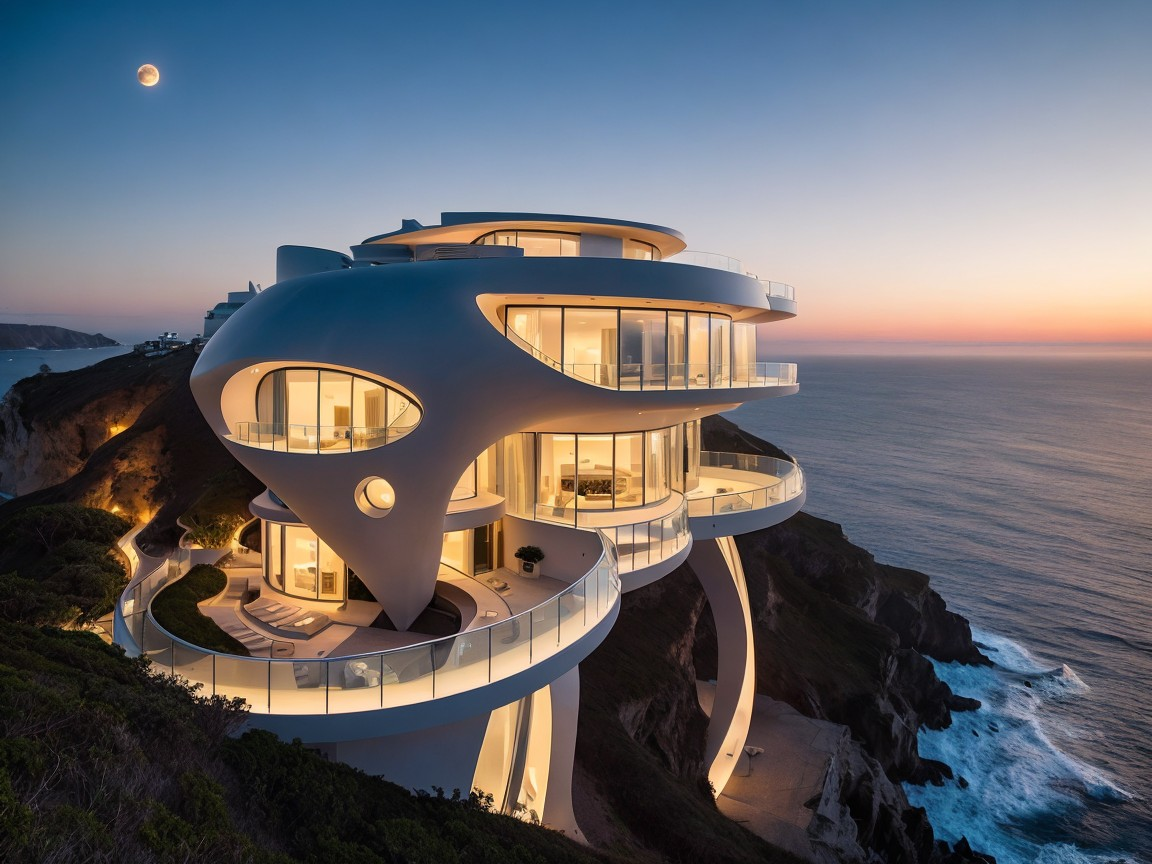
The specs for the above image are:
- Model: EssenceOfReality
- Size: 1152x864
This image serves as a compelling example of Organic Architecture, also referred to as Biomorphic Architecture in contemporary design. It is defined by its fluid, curved forms that appear to grow seamlessly from the surrounding landscape. The visual impact is striking: the structure harmonizes beautifully with the contours of the cliff, while the interplay between interior and exterior spaces—achieved through wraparound balconies and expansive glass walls—exemplifies the essence of this architectural philosophy. However, the celestial object in the sky resembles a moon rather than a planet, and the absence of a second planet detracts slightly from the overall composition.
Image Generation #2
Now come back to the realality, how good is an AI generated image that can be used for our business, our talk show, our event, our conference, our product, our podcast, our presence in the social networks.
Prompt
A bold YouTube video thumbnail with the text "Let's Talk About AI" in large, dynamic typography, with "TYO Lab" as a piece of information. The background shows a close-up of a microphone, with subtle soundwave graphics emanating from it. The color palette is muted but modern, using shades of deep blue, soft gray, and white to create a professional yet inviting look. The text is clean and impactful, drawing attention to the core message of the video.
Results
DALL·E (by OpenAI with ChatGPT Plus subscription)
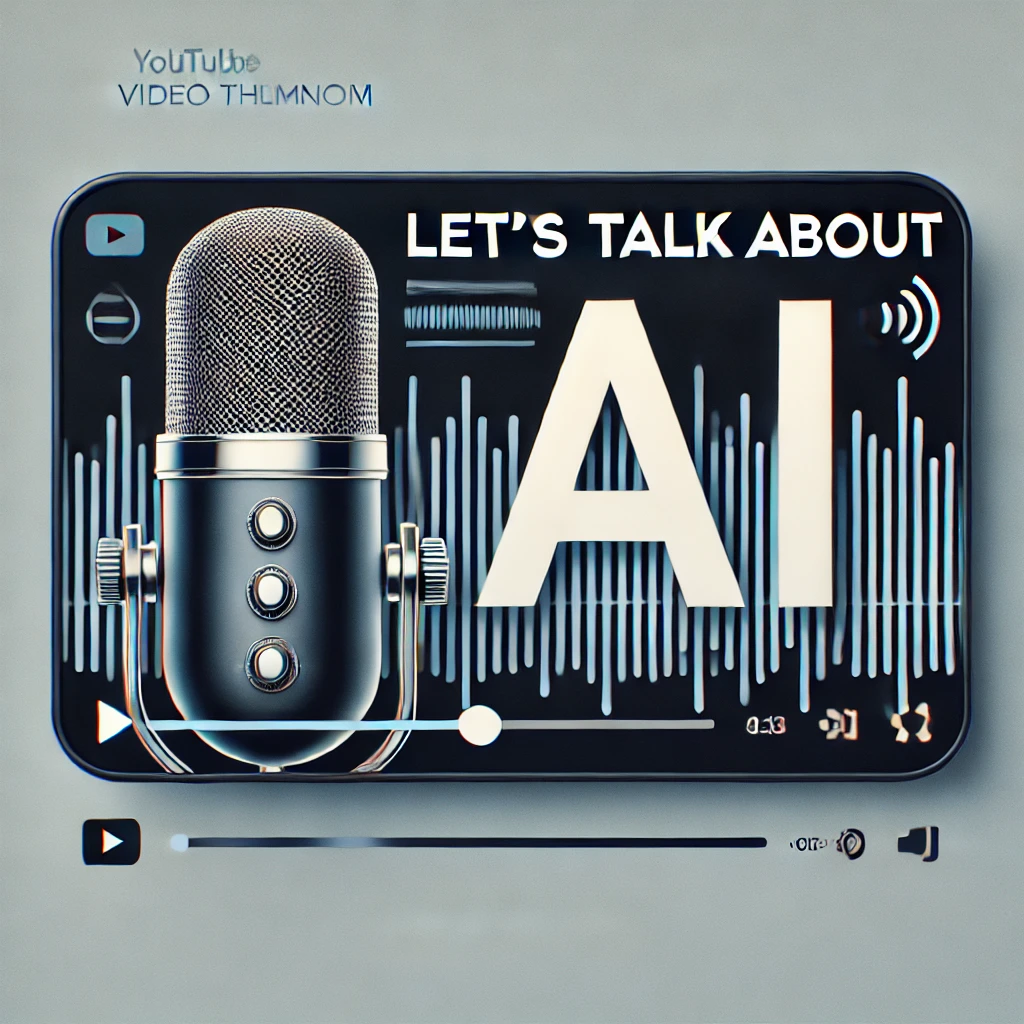
Grok
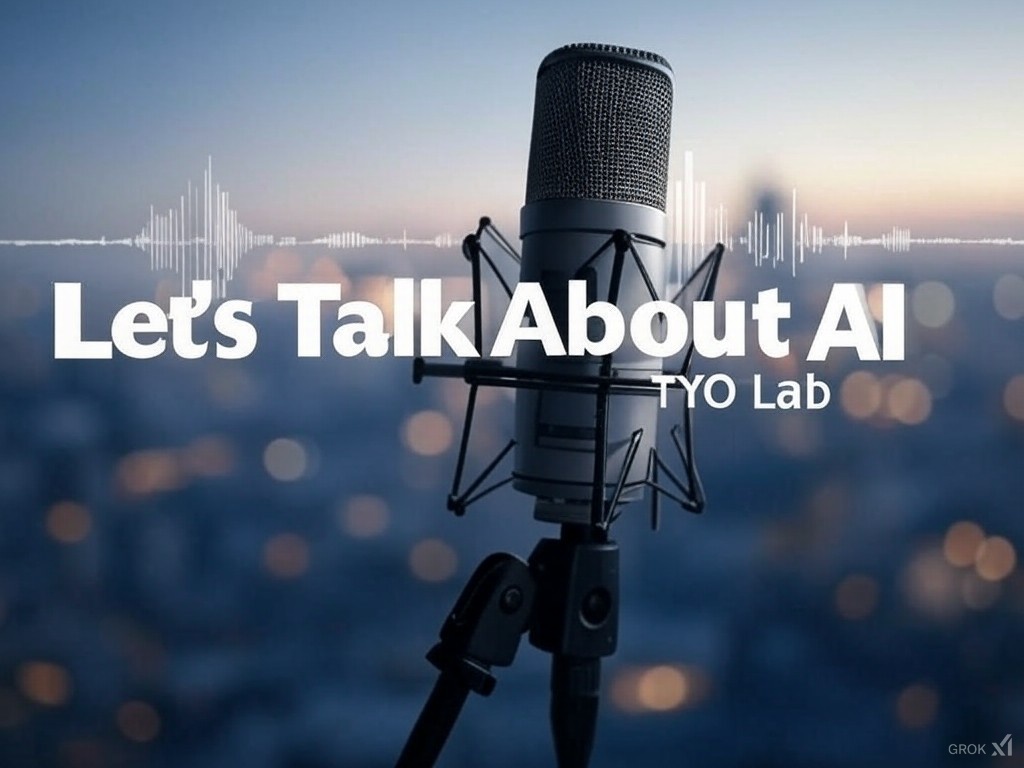
FlexClip
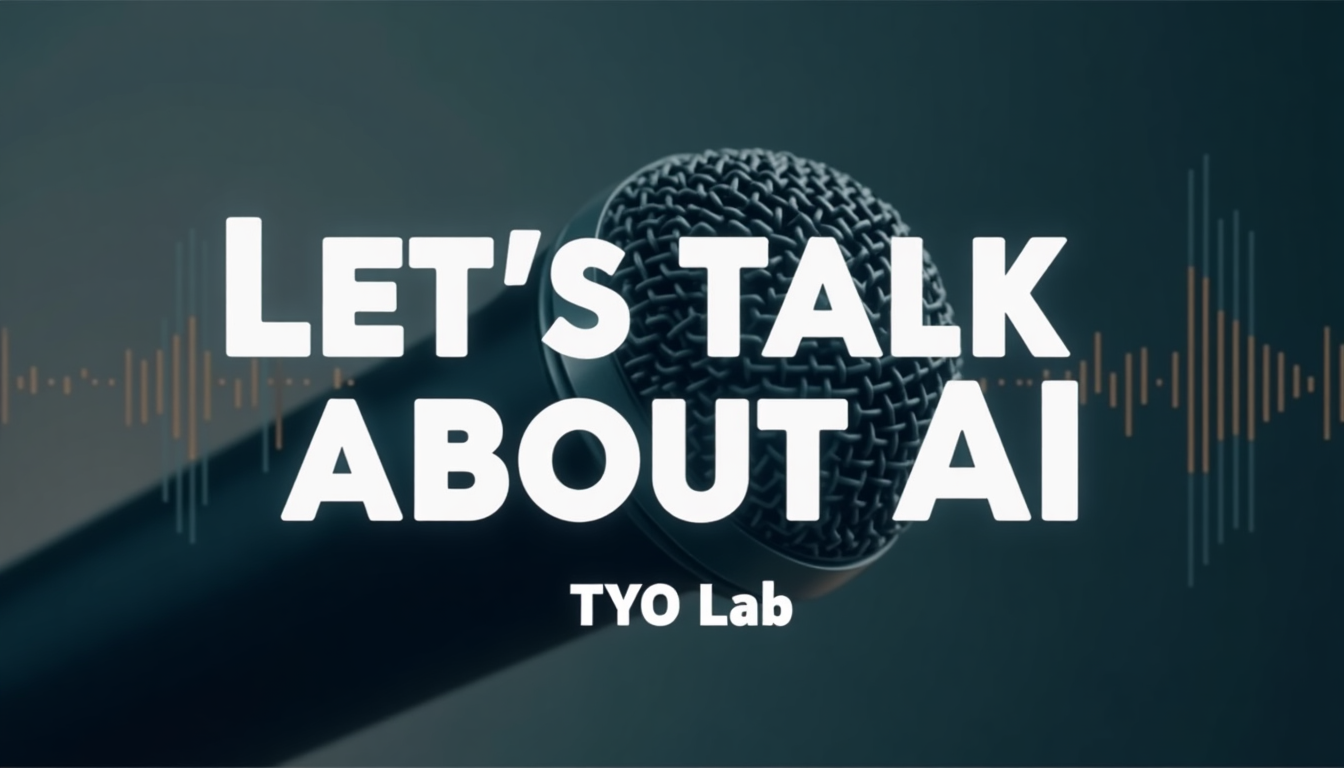
Ideogram
For this prompt, we use the following settings:
- Model: 2.0
- Style: Design
- Aspect Ratio: 16:9
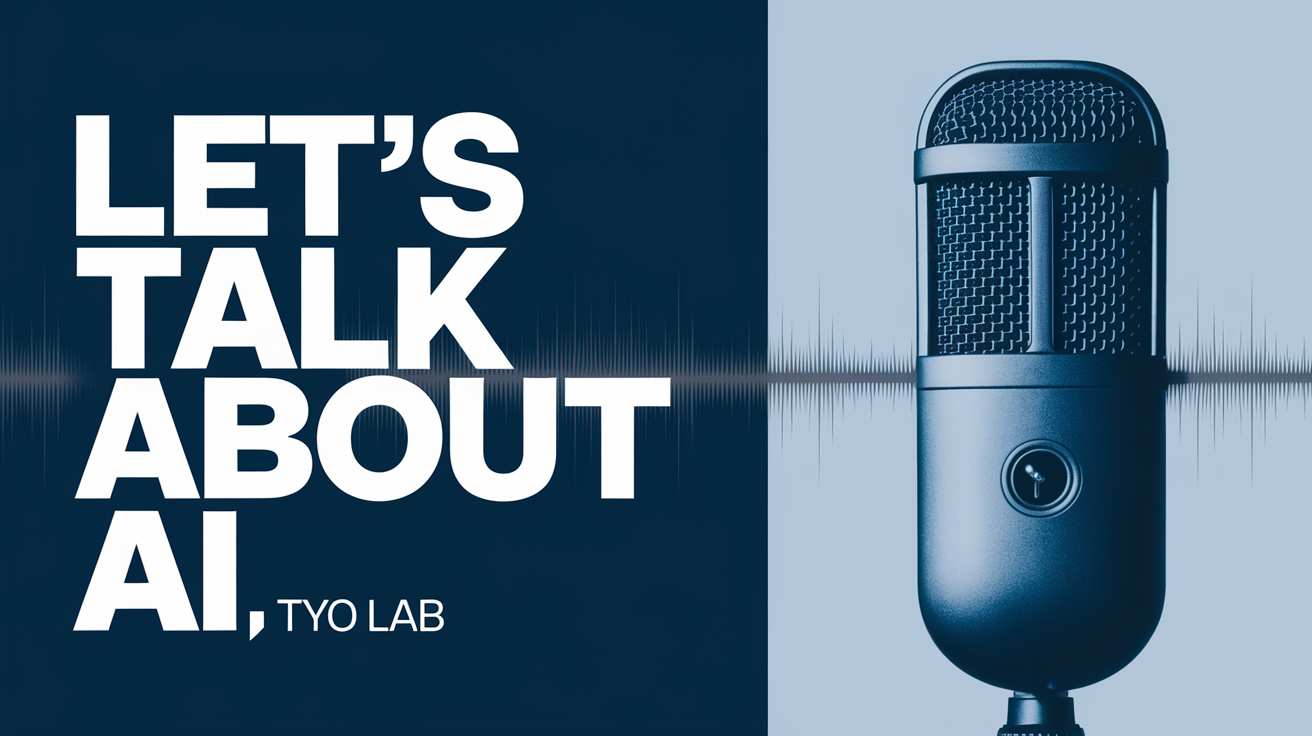
Microsoft Designer
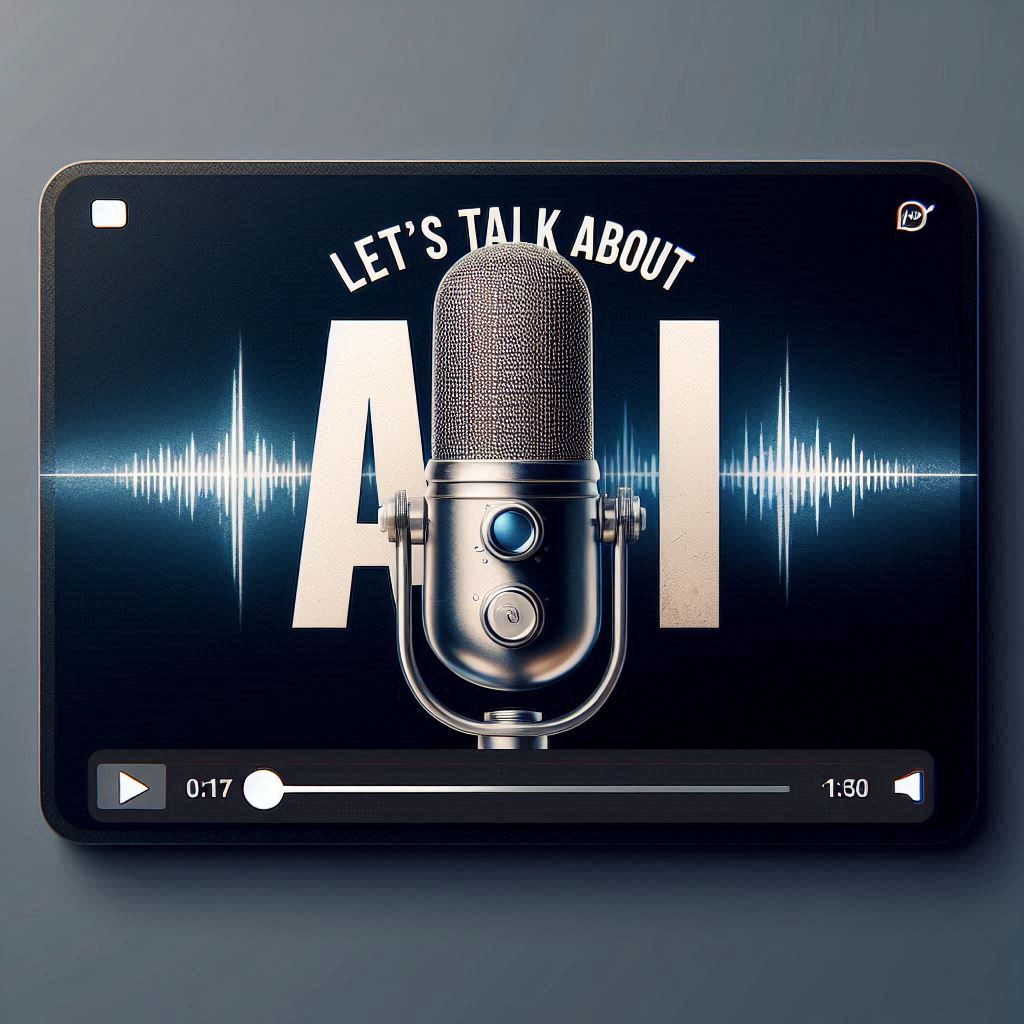
Clearly, once again you can see the similarity of image style between the images generated by DALL·E and Microsoft Designer.
Deep Dream Generator
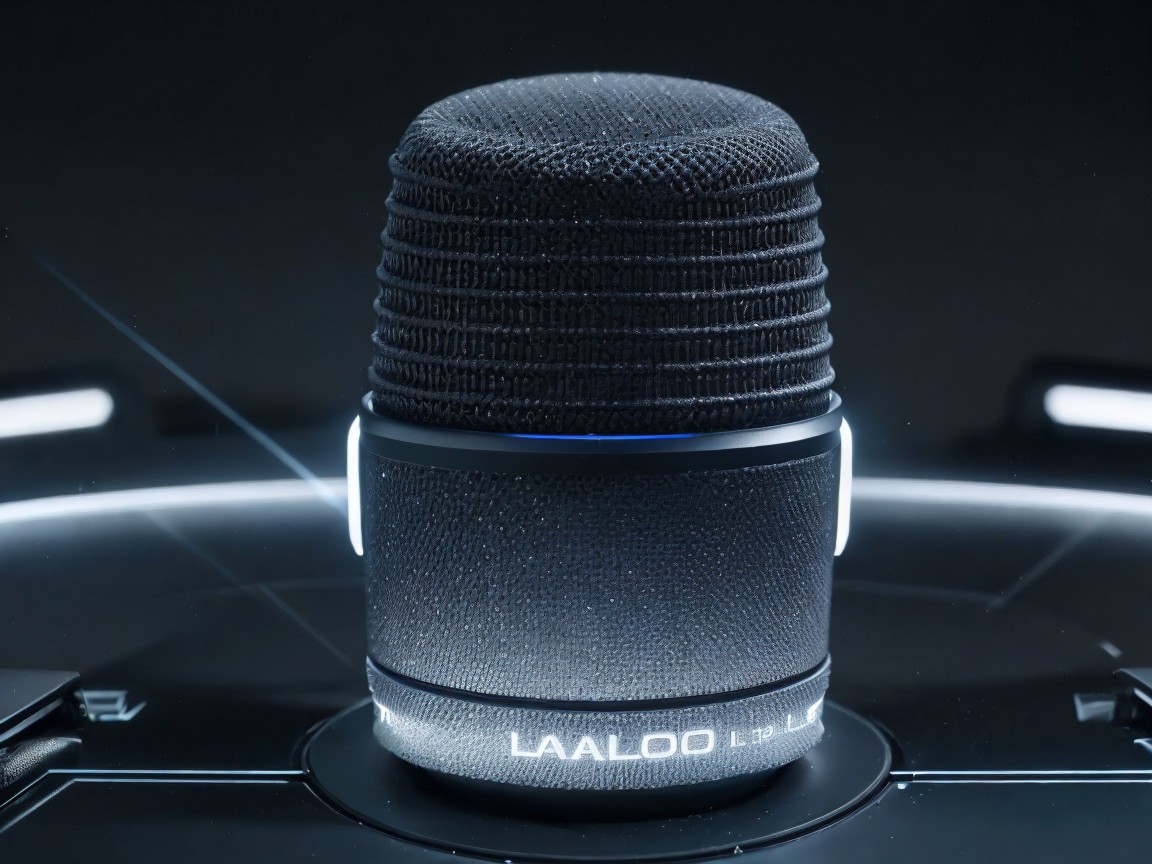
Comparison Chart
Conclusion
Each of these tools offers unique strengths tailored to different needs, whether you're an artist seeking creativity, a marketer looking for branding assets, or a content creator exploring innovative design solutions. As AI continues to evolve, these text-to-image tools represent just the beginning of a broader revolution in how we create and consume visual content.
Credits
The banner image was generated using FlexClip.
Previous Article
Next Article

Jan 16, 2025






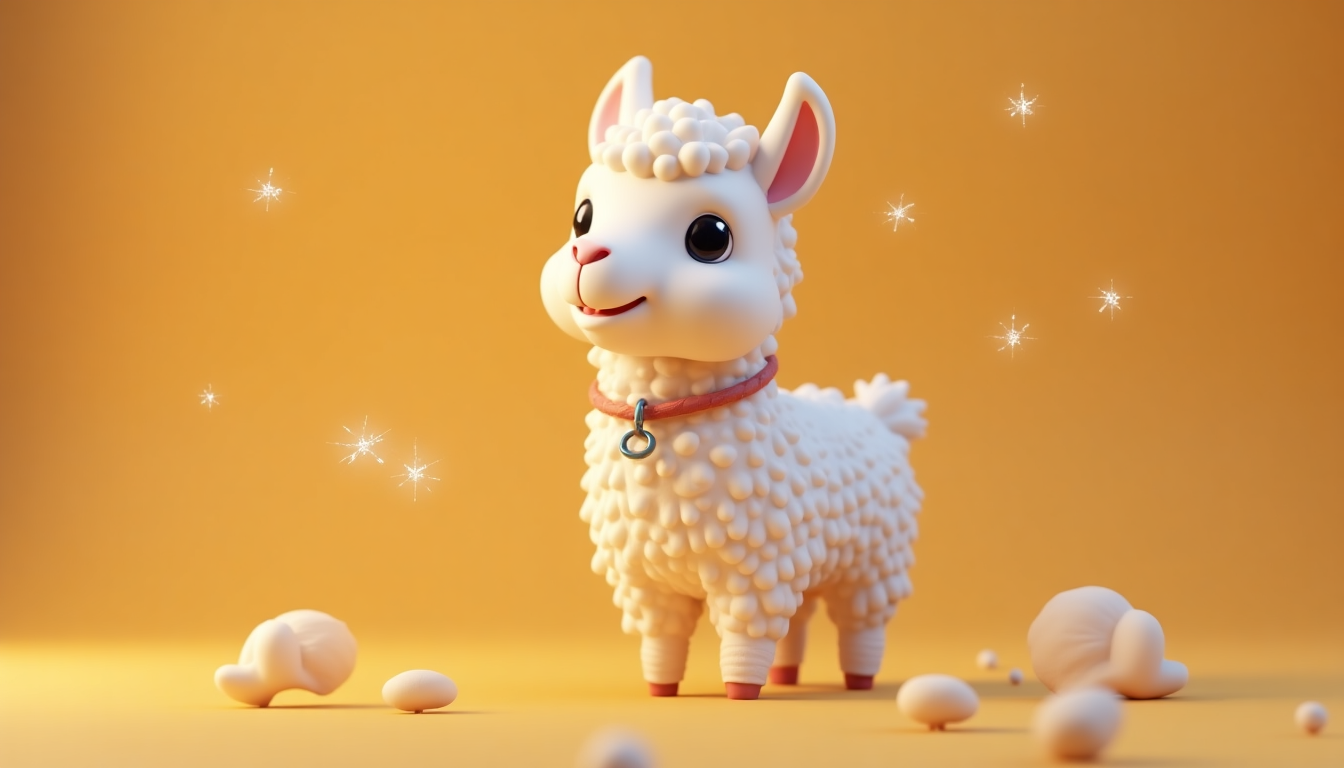
Comments (0)
Leave a Comment